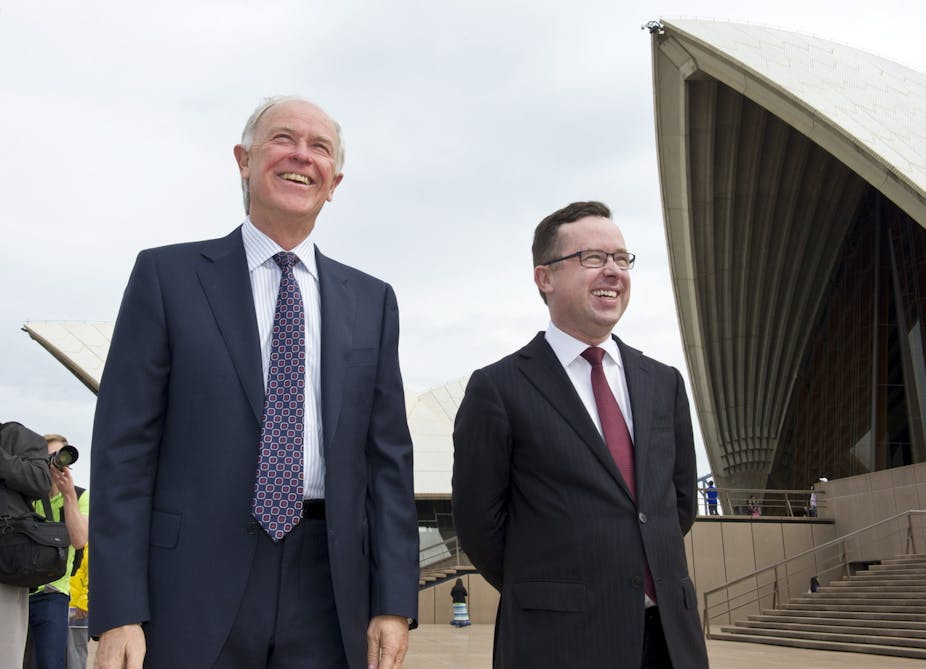Hopping from a A$250 million net profit for the 2010/11 financial year to a A$245 million net loss next period can make any CEO skip a few heartbeats, but this doesn’t deter Qantas chief executive Alan Joyce.
He’s forging ahead with the airline’s grand restructuring plans. The recent announcement of the 2012/13 after tax profit of a modest A$6 million, could be just the positive sign the “Flying Kangaroo’ needs to leap ahead. An aggressive A$700 million cost-cutting program coupled with a new international and internal operational strategy is Joyce’s flight plan and he’s not open to any course deviations, except up.
Cutting costs
The legacy of former Chief Executive Officer and Managing Director, Geoff Dixon in 2008, saddled management with inefficient and bureaucratic agreements, weakening its competitive position in the cut-throat aviation industry. Faced with waning trading conditions during the global financial crisis, Qantas curtailed labour costs by introducing new enterprise agreements replacing the traditional employee arrangements.
Industrial actions championed by various unions, including the Transport Workers Union (TWU), followed suit. In 2011, union disputes with the airline turned it into a "boxing kangaroo”, which saw 600 flights cancelled, disrupting 70,000 passengers and costing A$68 million.
The cost-cutting endeavour continued into 2012 with the review of catering and a restructure of engineering operations leaving 550 employees jobless. In fact, in August that year Joyce announced his intention to slash 2,800 full time jobs during the transformation to achieve $300 million in savings each year. His statement came on the heels of Fair Work Australia’s (FWA) decision in an arbitration case with the TWU to mandate its entitlement to conduct business free from union control.
However, it’s not all depressing news for employees. Part of Qantas’ process in acquiring a more modern fleet of aircraft is the movement of its maintenance facility from Melbourne to Brisbane. The facility is currently undergoing a $30 million upgrade with 120 new positions to be filled.
The “new” Qantas
The “new” Qantas is striving to run leaner by moving resources, lining infrastructure and utilising capital more efficiently. It’s reducing its domestic and international capacity and ongoing fuel surcharges. Importantly, it is reacting to customers’ calls for certain destinations, creating a market-by-market solution. For example, the new alliance with Emirates for flights to Europe will help lower the British departure tax by between £27-54 (A$47-94) per passenger, depending on their travel class.
All this by hubbing through Dubai instead of Singapore. This partnership has already produced impressive results, generating code share bookings at twice the rate of its previous European alliances. The proof of this pudding should be edible in the 2015 financial year.
To compete with Virgin, which recently posted a dismal A$98 million net loss, Qantas is expanding local infrastructure, recently announcing a multi-million dollar investment in Perth airport. This is a significant growth pledge to boost the local economy and capture customers by providing “a seamless airport experience”.
As well, Qantas is attempting to lure more customers by upgrading part of the fleet to wide-bodied A330s and new Boeing 737-800s and offering attractive frequent-flyer schemes.
The airline’s discount arm Jetstar incurred a A$31 million start-up loss in its newly created Japan division, due to launch by the end of the year. The outlook points to a strong cash flow and absorption of Japan’s domestic air travel capacity. Six times larger than Australia’s, the Japanese market is a significant growth opportunity and experts indicate the Japanese are reacting to competitively priced airline tickets, having had limited choices thus far.
Locally, we witnessed similar responses when low-cost carriers entered our scene. CEO Joyce has buoyantly predicted Jetstar’s Japanese venture will be in the black within three years. This budget airline’s rising success in becoming the dominant regional player has influenced budget models in Asian markets.
Has it all been worth it?
The flying kangaroo’s pursuit of profitability has not been without its “human cost” with regard to employee relations. In 2012, Fair Work Australia observed that “Qantas faces significant competitive pressures and needs to implement cost savings in order to respond”. Qantas’ quest for greater employment flexibility has been met with considerable employee trepidation.
Escalating employment of contractors to replace full-time employees has created a sense of job insecurity amongst workers. This uncertainty could effect how front line staff engage with customers and the provision of overall customer service. Given increasing competition from other airlines, Qantas needs to embrace a customer-driven business approach. One of the keys to this would be to adopt a quality employee retention and engagement program so workers experience the value of loyalty to the business.
As for customers, maybe the new Qantas Cash venture, described by Joyce as the “Swiss Army Knife of Frequent Flyer cards”, may be just the “toolbox” addition the airline requires to set profits soaring.
Already the airline is courting 9.5 million customers to take up the various levels of bronze, silver and gold cards. In the meantime, Joyce has settled for basic “bronze”, because as CEO he doesn’t pay for his tickets.
Co-author Anna Thomas is a Special Project Officer in the Faculty of Business and Economics at Macquarie University.

